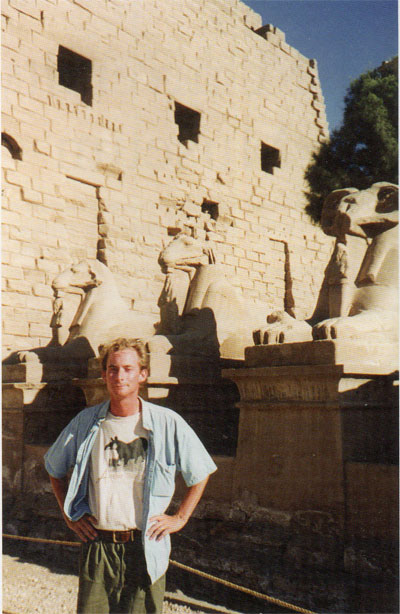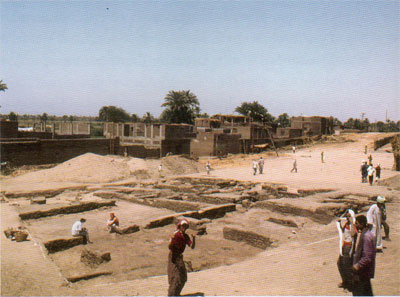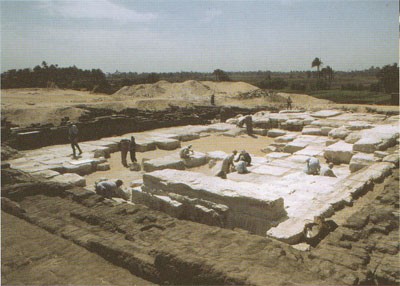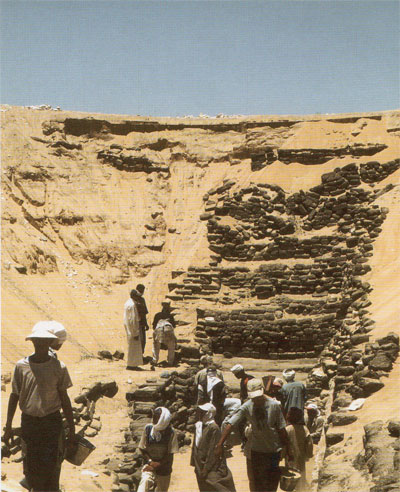
The Museum’s Josef Wegner, Associate Curator in the Egyptian Section, has been interested in Egyptology since childhood. Growing up in New Hampshire, he was long aware of the significant Egyptian collections housed at the Museum and the opportunities for academic training in Egyptology. Wegner thus came to Penn in 1985 as an undergraduate and completed a double major in Egyptology and Anthropology.
Although he considered applying to graduate schools elsewhere, Wegner stayed at Penn because of the strength of its Egyptology program, which combines the study of material culture and texts to facilitate a more comprehensive understanding of ancient Egyptian culture and society. Wegner’s research reflects this integration, and he approaches Egyptian archaeology as historical archaeology.
As a graduate student studying with David O’ Connor and David Silverman, Wegner traveled to Egypt for the first time in 1991. That year the famous boat graves were discovered at Abydos (Expedition 33(3):35–37), and Wegner experienced firsthand the thrill of working on this incredible find. His fascination with the Abydos area resulted in a Ph.D. dissertation on the Middle Kingdom period (2000–1600 BCE), and his fieldwork was the first sustained project there on this period in almost a hundred years.


After finishing his Ph.D. in 1996, Wegner was appointed Assistant Curator in the Museum’s Egyptian Section, becoming Associate Curator in 2002. His fieldwork continues at South Abydos and concentrates on the Late Middle Kingdom (1850–1600 BCE), including materials from the end of the 12th Dynasty and from the 13th Dynasty. The major components of the project include a state-planned town site and the royal funerary complex (temple and tomb) of Senwosret III.

Wegner’s research at the town—which housed people who maintained the royal funerary complex—revealed the presence of bakeries, granaries, an economic zone, a private cemetery, and residential areas, including the mayor’s house (Expedition 41(3):4–5). One of his most exciting discoveries was the “birth brick,” an important Middle Kingdom object used in childbirth rituals and found in a residential room in the mayor’s house. The room also contained seal impressions associated with a king’s daughter who was probably the wife of one of the mayors.
In the private cemetery, Wegner used a magnetometer to create a magnetic map of the area and “see” below the surface. This map indicated numerous burials, some of which had been looted in antiquity—the looters’ pits showing up clearly on the magnetic images.
At the temple of Senwosret III, Wegner re-exposed David Randall-MacIver’s excavations from 1899–1900, as well as opening additional temple areas (Expedition 42(2):9–18). Recently he has also excavated the midden (trash) deposits around the temple. This has yielded a well-stratified sequence of ceramics and seal impressions with hieroglyphic texts, including private names and titles. This is providing significant information about the series of mayors who oversaw the maintenance of the funerary complex.
Wegner has also begun investigating the tomb of Senwosret III. This is the largest royal tomb in Egypt (200 m long) — a completely subterranean structure with an imposing mountain that looks like a pyramid looming over it. This configuration suggests that it may conceptually link the earlier Old and Middle Kingdom pyramids to the emergence of the later hidden royal tombs best known from the Valley of the Kings in the Western Desert near Luxor. Although the tomb’s underground passageway was explored in 1902, Wegner will carefully excavate and conserve it so that tourists can potentially visit once work is finished. His initial excavations have exposed a wide, gypsum-plastered, shallow-step staircase designed for ceremonies associated with the tomb. Several small ritual buildings and mastabas (tombs) have also been excavated.
Deborah I. Olszewski is a Lecturer in the University of Pennsylvania’s Anthropology Department and a Research Associate at the Museum.
